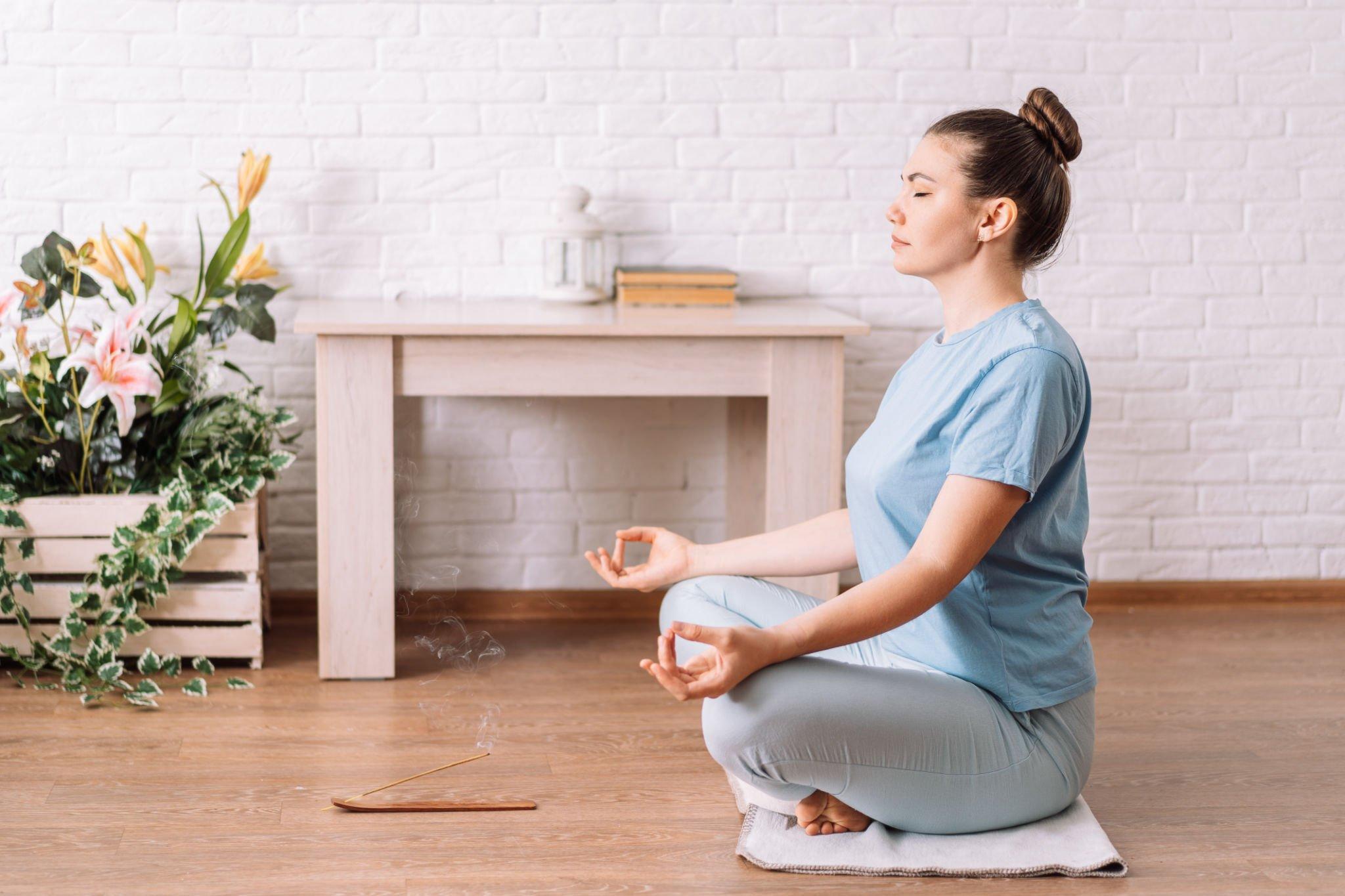Meditation is a simple technique that improves with practice and offers benefits both for the body and the mind. breathing or attention to breath was a meditation technique that was advocated and taught even by Lord Buddha. Breathing is the tether or an anchor line that will help you improve focus and guide you back whenever you lose concentration. That is why Meditation for beginners stresses following the breath.
Why Bringing Awareness to Breathing is Important?

Meditation for beginners begins with brief sessions and proceeds to longer sessions with daily practice.
- Awareness of breath and breathing in and out and focussing on it will help you develop insight and lead you to a state of awakening and enlightenment. This will also help you develop concentration.
- The practice of deep breathing and concentrating on your breath will relax your body and mind. when it calms your mind you tend to be more receptive to your surroundings. This will help you to observe and respond to the situations appropriately.
- To banish negative thoughts, you need to be aware of the negative thoughts. Deep breathing not only calms your mind enough to take note of the negativity in you, but it also helps you to let it pass without you identifying with them.
- The breath is the important link between the mind and body. Deep breathing and meditation help you to strengthen the link.
Breathing guide for Beginners
Meditation for beginners is made as simple as possible. The sessions are designed to be short at the start and are gradually increased as you progress.

The steps
- Seat yourself comfortably. The lotus position is considered to be an ideal position because the position by itself will help in improving your focus and concentration. But it is very difficult to maintain this position and could be a deterrent to your That is why meditation for beginners d not lay down any particular seating position as mandatory. Any position is good enough but ensure that it does not make you fall asleep.
- Keep your eyes closed and focus on any one spot in the room.
- Warm up by rolling your shoulders slowly in forwarding and backward motions. Also, lean your head from side to side. This will help you relax
- and carry this relaxed state of your body to the meditation session.
- Observe your breath. Become aware of your breath. Notice how it flows in and how it flows out. Just focus on it without trying to change anything about it.
- Now as you do that, your thoughts are likely to wander and you tend to lose concentration. Every time your thought wanders, direct your attention back to breathing.
- Now slowly direct your attention towards the stages of the complete breath as well as the slight breaks between each breath.
- After some time, now move on to visualizing the air passing through the cavities, sinuses, and
- All the time let the thought that makes you wader pass through and return your attention back to your breathing
- Now feel how your chest and stomach rise and fall gently with each breath.
- Count silently as you inhale and exhale wait for the next breath and keep counting.
- After some time, gently reawaken your body and mind by keeping your eyes closed and becoming aware of the noises and things around you
- Sit for a few more minutes and open your eyes.
- Slowly return to the standing position and re-energize.



